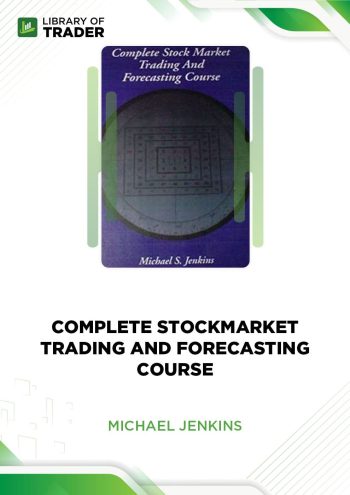Streetsmart Guide to Valuing a Stock is a how-to book that provides you with the tools to make money in the stock market.
Course Overview
Streetsmart Guide to Valuing a Stock is a how-to book that provides you with the tools to make money in the stock market. The book’s focus is on stock valuation—an area of great interest to many investors, but understood by very few.
Course Outline
Preface xi
Acknowledgments xv
CHAPTER 1 INTRODUCTION AND OVERVIEW
- Financial Flameout
- Good Companies—Hot Stocks—Ridiculous Prices
- The Investment Decision
- The 10 Principles of Finance
- Overview of the Book
CHAPTER 2 THE 10 PRINCIPLES OF FINANCE AND HOW TO USE THEM
- Principle 1: Higher Returns Require Taking More Risk
- Principle 2: Efficient Capital Markets Are Tough to Beat
- Principle 3: Rational Investors Are Risk Averse
- Principle 4: Supply and Demand Drive Stock Prices in the Short-run
- Principle 5: When Analyzing Returns, Simple Averages Are Never Simple
- Principle 6: Transaction Costs, Taxes, and Inflation Are Your Enemies
- Principle 7: Time and the Value of Money Are Closely Related
- Principle 8: Asset Allocation Is a Very Important Decision
- Principle 9: Asset Diversification Will Reduce Risk
- Principle 10: An Asset Pricing Model Should be Used to Value Investments
- Summary
CHAPTER 3 STOCK VALUATION: SOME PRELIMINARIES
- Introduction to Valuation
- DCF Stock Valuation
- We Caused the High-Tech Bubble
- Return to Stockholders
- Stock Price—Too High?—Too Low?—Just Right?
- Stock Valuation—Art, Science, or Magic?
- Stock Valuation Approaches: Fundamental, Technical, and MPT
- Stock Value, Stock Price, and Emotions
- Stock Value, Stock Price, and Analyst Recommendations
- When to Buy, When to Sell: Our Recommendation
- Where Do We Go Next?
CHAPTER 4 HOW TO VALUE A STOCK
- Some Definitions Relating to Cash Flow
- The Free Cash Flow to the Firm Approach
- Why DCF and Not EPS?
- The Discounted FCFF Valuation Approach
- Microsoft—A Simple DCF Example
- Valuation—Growth versus Value, Large Cap versus Small Cap
- Valuation—The Next Step
CHAPTER 5 FORECASTING EXPECTED CASH FLOW
- The Five Chinese Brothers
- Growth Rates and the Excess Return Period
- Net Operating Profit Margin and NOP
- Income Tax Rate and Adjusted Taxes
- Net Investment
- Incremental Working Capital
- Free Cash Flow to the Firm
- Valuation Exercise: Estimating Free Cash Flow for Cisco
CHAPTER 6 ESTIMATING THE COST OF CAPITAL
- Don’t Count Until You Discount
- WACC and Market Capitalization
- Estimating ConEd’s WACC
- The Cost of Common Equity and Shares Outstanding
- The After-Tax Cost of Debt and Debt Outstanding
- The Cost of Preferred Stock and Amount Outstanding
- WACC Calculation—ConEd
- WACC Calculation—Cisco
- Balance Sheet Items in the Valuation Process: Our Recommendation
- Valuation Exercise: Cisco
- After the Cost of Capital—The Next Step
CHAPTER 7 FINDING INFORMATION FOR VALUATIONS
- Save a Tree—Use the Internet
- The Internet and Investment Information
- Cash Flow Valuation Inputs—Easy to Find
- Cash Flow Valuation Inputs Requiring Estimation
- Cost of Capital Valuation Inputs
- Custom Valuations—The Next Step
- Valuation Exercise: Cisco
CHAPTER 8 VALUING A STOCK—PUTTING IT ALL TOGETHER
- Overview
- Valuing Citigroup—December 17, 2002
- Valuing Merrill Lynch—December 18, 2002
- Valuing Berkshire Hathaway—December 18, 2002
- Valuing Washington REIT—December 20, 2002
- Summary
Glossary
Acronyms
Bibliography
Index
What Will You Learn?
When you’ve finished this hands-on, easy-to-use guide, you will have learned how to:
- Value stocks of the general market and high-tech companies, such as Microsoft and Cisco Systems;
- Value stocks of financial companies and real estates investment trusts, such as Citigroup, Merrill Lynch, Berkshire Hathaway, and Washington REIT;
- Spot undervalued or overvalued stocks for buying and selling opportunities;
- Estimate important valuation inputs such as growth, operating margin, and cost of capital;
- Find valuation inputs on free Internet Web sites;
- Develop a spreadsheet to value a stock;
- Combine stocks in an efficiently structured investment portfolio;
- Manage your risk;
- Use the 10 principles of finance to your advantage.
Who Is This Course For?
Streetsmart Guide To Valuing a Stock (2nd Ed.) by Gary Gray is for all of you who mistakenly think you have to be a stock market guru to value stocks like a pro.
Gary Gray
Please Login/Register if you want to leave us some feedback to help us improve our services and products.
RELATED COURSES
VIEW ALL-
 New Rules of PennyStockingDOWNLOADNew Rules of PennyStockingUpdate 06 Nov 2022IntermediateDOWNLOAD
New Rules of PennyStockingDOWNLOADNew Rules of PennyStockingUpdate 06 Nov 2022IntermediateDOWNLOADNew Rules of PennyStocking is a stock conference that brings together many famous speakers, sharing their experiences and successful trading methods.
Add to wishlist -
 Ultimate Book on Stock Market Timing, Vol 2: Geocosmic Correlations to Investment Cycles – Raymond A. MerrimanDOWNLOADUltimate Book on Stock Market Timing, Vol 2: Geocosmic Correlations to Investment Cycles – Raymond A. MerrimanUpdate 21 Nov 2022All LevelsDOWNLOAD
Ultimate Book on Stock Market Timing, Vol 2: Geocosmic Correlations to Investment Cycles – Raymond A. MerrimanDOWNLOADUltimate Book on Stock Market Timing, Vol 2: Geocosmic Correlations to Investment Cycles – Raymond A. MerrimanUpdate 21 Nov 2022All LevelsDOWNLOADUltimate Book on Stock Market Timing, Vol 2 by Raymond A. Merriman sheds light on the analysis of long-term planetary cycles and phases for stock patterns. Thus, you can forecast the next price actions to develop viable strategies.
Add to wishlist -
 POS+ English 30 Days Subscription – SurjeetkakkarDOWNLOADPOS+ English 30 Days Subscription – SurjeetkakkarUpdate 06 Nov 2022BeginnerDOWNLOAD
POS+ English 30 Days Subscription – SurjeetkakkarDOWNLOADPOS+ English 30 Days Subscription – SurjeetkakkarUpdate 06 Nov 2022BeginnerDOWNLOADPOS+ English 30 Days Subscription by Surjeet Kakkar will transform you into a better trader with sharper eyes on trading profitable opportunities.
Add to wishlist -
 Michael Jenkins – Complete Stockmarket Trading and Forecasting CourseDOWNLOADMichael Jenkins – Complete Stockmarket Trading and Forecasting CourseUpdate 06 Nov 2022All LevelsDOWNLOAD
Michael Jenkins – Complete Stockmarket Trading and Forecasting CourseDOWNLOADMichael Jenkins – Complete Stockmarket Trading and Forecasting CourseUpdate 06 Nov 2022All LevelsDOWNLOADComplete Stockmarket Trading and Forecasting Course is a course on Gann’s trading ideas, expanded and refined by a successful, active trader – Michael Jenkins.
Add to wishlist -
 What Type Of Trader Are You – Urban ForexDOWNLOADWhat Type Of Trader Are You – Urban ForexUpdate 02 Dec 2022All LevelsDOWNLOAD
What Type Of Trader Are You – Urban ForexDOWNLOADWhat Type Of Trader Are You – Urban ForexUpdate 02 Dec 2022All LevelsDOWNLOADWhat Type Of Trader Are You – Urban Forex helps you make sure which type of trader you are and also teaches you how to really take advantage of this knowledge.
Add to wishlist -
 Workshop: The Best Way to Trade Stock Movement – Active Day TraderDOWNLOADWorkshop: The Best Way to Trade Stock Movement – Active Day TraderUpdate 10 Nov 2022All LevelsDOWNLOAD
Workshop: The Best Way to Trade Stock Movement – Active Day TraderDOWNLOADWorkshop: The Best Way to Trade Stock Movement – Active Day TraderUpdate 10 Nov 2022All LevelsDOWNLOADThe Active Day Trader Workshop: The Best Way to Trade Stock Movement is meant to give those who wish to invest and create stock portfolios skills for value investing and stock selection based on solid long-term fundamentals.
Add to wishlist



Reviews
There are no reviews yet.